The 5 Best Used Electric Vehicles for Under $20,000
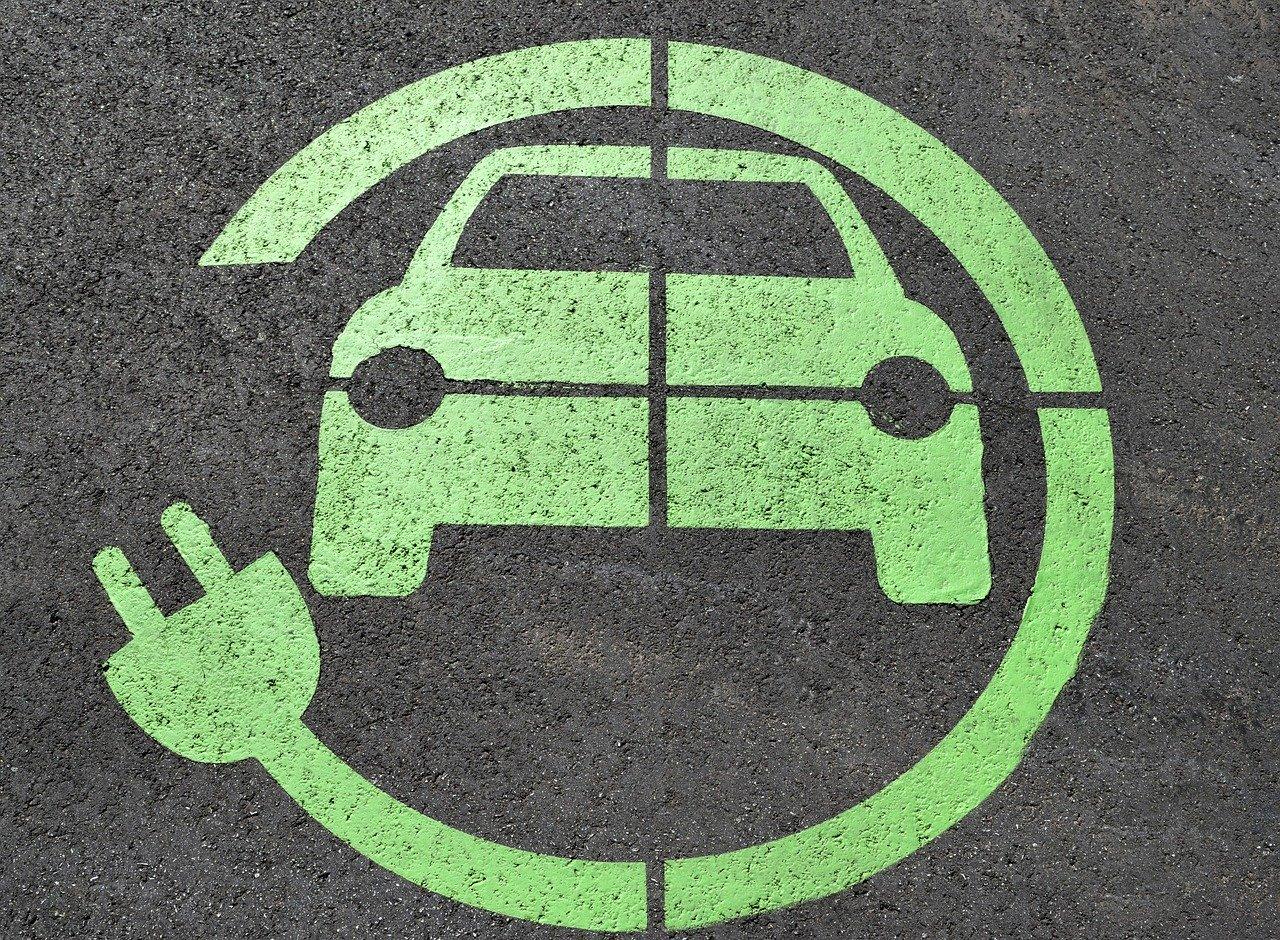
Contents
Introduction
With used electric vehicle (EV) prices falling for the first time since the pandemic, it now makes more sense than ever to consider buying a used EV. They offer a host of benefits over traditional used cars, including lower running costs, reduced emissions, and in many cases a more enjoyable ride.
But not all pre-owned EVs are created equal. Some make great sense as a used car purchase — others, not so much. That’s why we’ve taken a close look at the various EV models that are readily available on the used market for under twenty grand and selected those that, in our view, offer the best combination of performance, features, and reliability for the money.
So without further ado, here are the best EVs you can buy right now for under $20,000, presented in alphabetical order.
The List
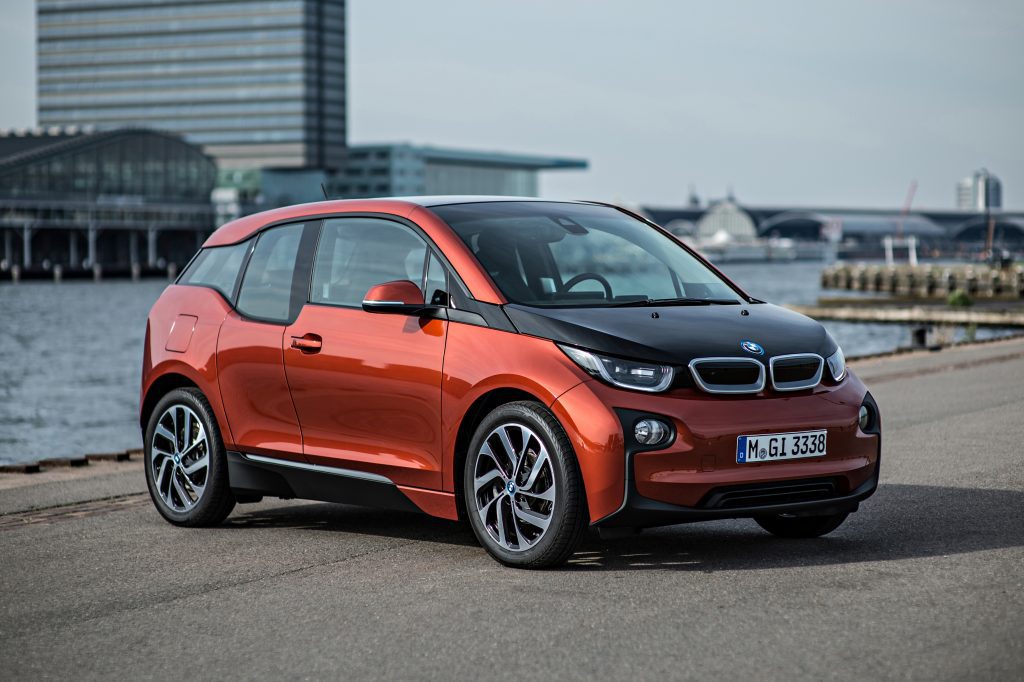
BMW i3
The BMW i3, a compact hatchback, has made a considerable impact on the EV market since its debut in 2014. As one of the pioneer vehicles in the realm of luxury electric mobility, it offers an intriguing blend of performance, eco-friendliness, and signature BMW driving dynamics.
Underneath the car’s unique exterior lies an advanced carbon fiber-reinforced plastic (CFRP) structure, ensuring a lightweight yet sturdy build. This contributes to the BMW i3’s agile handling and responsive driving experience, two features that are standout within its segment.
Performance-wise, the i3 won’t disappoint. While it might not compete with the acceleration of some high-performance EVs, it delivers respectable power for its class, with typical models providing a 0-60 mph time of around 7 seconds. Range has been a point of contention for this model, with earlier models offering around 80-90 miles, but later models, particularly those post-2017, show significant improvements, with some reaching up to 153 miles on a single charge.
Significantly, the i3 also comes in a unique variant known as the i3 REX (Range Extender). This version includes a small gasoline engine that acts as a generator to recharge the battery when it runs low, thereby increasing the total driving range to as much as 200 miles. It’s an appealing option for those who like the idea of electric driving but suffer from range anxiety. However, note that the REX version is not as efficient as the all-electric version when the gasoline engine is running.
One aspect where the i3 stands out is in its interior. The cabin embraces a futuristic design with eco-friendly materials, such as recycled plastics and responsibly sourced wood, presenting a unique aesthetic that isn’t commonly seen in other cars. Passengers will appreciate its spaciousness, but cargo space is a bit limited compared to other hatchbacks. The iDrive infotainment system, albeit complex at first, proves intuitive and is filled with useful tech features.
On the downside, the i3’s unique design may not appeal to everyone. Additionally, ride comfort is considered just average for the class, with some rivals offering smoother rides. While its compact size can make it ideal for city driving, it might feel a bit cramped for those needing more passenger or cargo space.
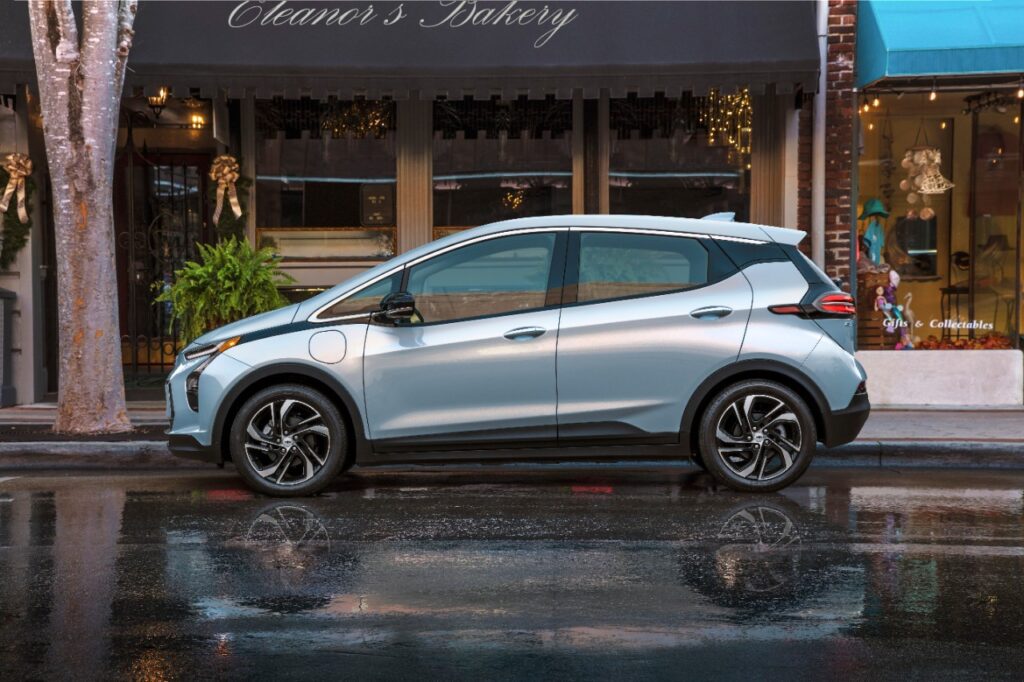
Chevrolet Bolt
The Chevrolet Bolt is a subcompact hatchback that has been a popular choice for eco-conscious drivers since its introduction in 2017. It presents an affordable yet capable option for those looking to transition to an electric vehicle.
In terms of performance, the Bolt’s electric motor provides brisk acceleration, with a 0-60 mph time of approximately 6.5 seconds. The car is also nimble and easy to maneuver, making it a great choice for city commuting. One of the key strengths of the Bolt is its impressive electric range. Most models deliver a range of approximately 238 to 259 miles, depending on the model year, which is competitive with many pricier EVs.
Inside, the Bolt is roomier than one might expect from its compact size, with comfortable seating for up to five people. The cargo area is also decent for the class, especially when you fold the rear seats down. Its cabin is modern and minimalistic, with a digital instrument cluster and a large touchscreen for the infotainment system.
The Bolt’s infotainment system comes with plenty of features, including smartphone integration via Apple CarPlay and Android Auto. However, while the interface is generally user-friendly, the screen can be slow to respond to inputs in some instances.
On the road, the Bolt delivers a comfortable ride, but it’s worth noting that its handling, while responsive, isn’t as engaging as some sportier rivals. The interior, while functional and roomy, doesn’t quite match the premium feel of some other EVs in terms of materials used.
It’s also worth noting that there has been a significant recall for the Bolt concerning potential battery-related fire risks. Potential buyers should verify whether any examples they’re considering have been affected by this recall and whether the necessary repairs were completed. This can be done by obtaining the vehicle identification number (VIN) and checking it against the National Highway Traffic Safety Administration’s (NHTSA) database.

Kia Soul EV
The Kia Soul EV, introduced in 2015, combines the distinctive style and practicality of the conventional Soul with electric efficiency. This compact electric vehicle provides instant power from its electric motor, resulting in responsive city driving dynamics. The model offers a range of approximately 100 miles on a full charge, which can meet daily commuting needs for many drivers.
Inside, the Soul EV impresses with its spacious and comfortable cabin. The infotainment system is intuitive and equipped with standard features like smartphone integration and navigation. While the cargo capacity is slightly less than the non-electric Soul due to the placement of the battery, it remains competitive in its class.
On the road, the Soul EV delivers a comfortable ride and confident handling, with the low center of gravity from its underfloor battery pack contributing to stability in corners. The vehicle’s regenerative braking system, which can be adjusted, allows for one-pedal driving at its highest setting.
However, the Soul EV does face a few challenges. It performs well in city driving, but its performance on the highway is underwhelming compared. The ride can feel firm, particularly on uneven surfaces. Also, its range lags behind some competitors available in the same years.
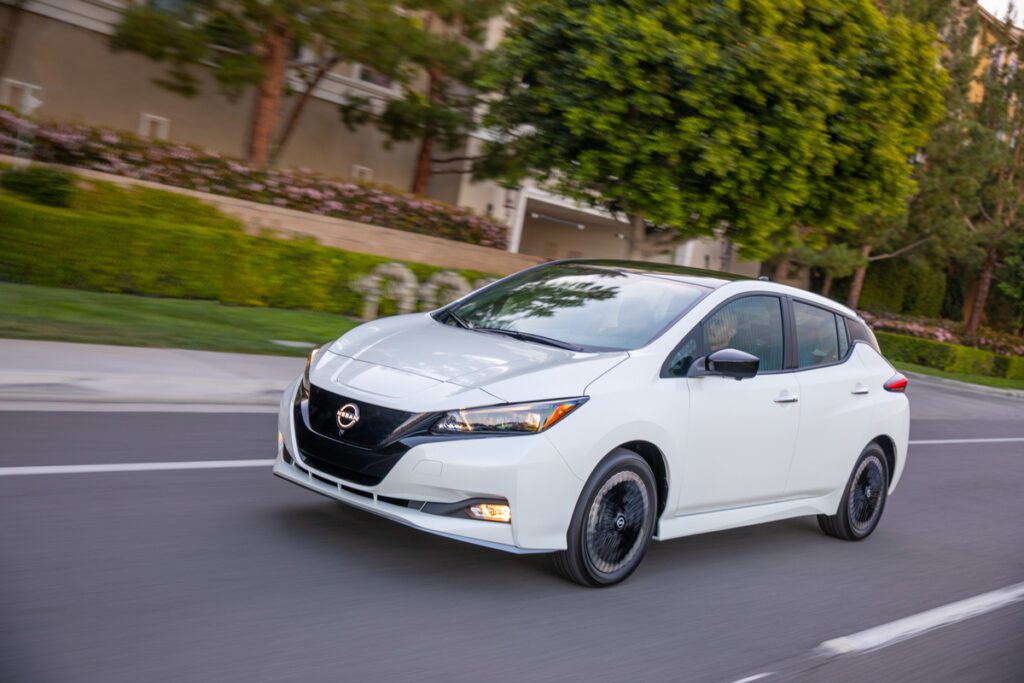
Nissan Leaf
The Nissan Leaf, which debuted in 2011, holds the distinction of being one of the world’s first mass-market all-electric vehicles. Over the years, the Leaf has evolved significantly in terms of range, performance, and technology, making it a popular choice for those looking to transition to an electric vehicle.
The Leaf’s electric motor offers smooth and quiet operation, with instant torque that provides responsive acceleration, particularly in city driving. Early models offered modest range figures around 73 miles, but this increased significantly in later years. The Leaf introduced a longer-range version, the Leaf Plus, in 2019, which offers a range of up to 226 miles, depending on driving conditions.
The interior of the Leaf is spacious and comfortable, with room for five passengers. Higher trim levels feature more premium materials, contributing to a more upscale feel. The cargo space is generous for the compact car class, providing practicality for daily needs. The infotainment system is user-friendly and comes equipped with features like navigation, smartphone integration, and in later models, ProPilot Assist, Nissan’s semi-autonomous driving system.
The Leaf offers a smooth ride that can handle most road conditions with ease. Handling is secure, and while it might not be the sportiest electric vehicle, it delivers a reliable and comfortable ride.
However, the Leaf does have a few shortcomings. While the range in later models is competitive, it still lags behind some rivals. The Leaf also lacks a thermal management system for its battery, which some competitors offer to help maintain battery health in extreme temperatures.
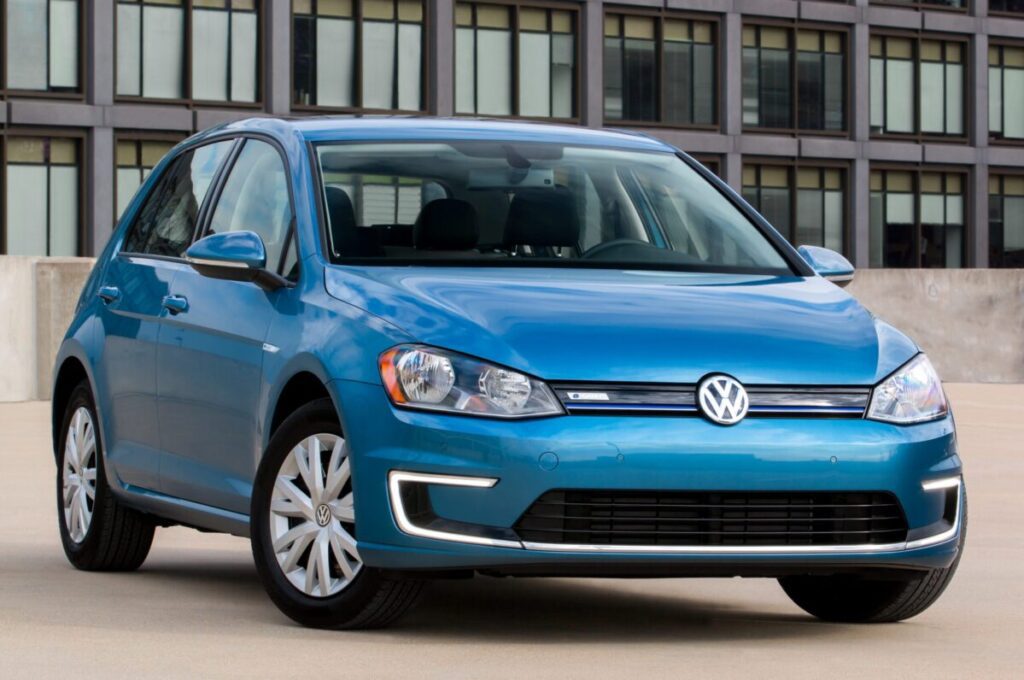
Volkswagen e-Golf
The Volkswagen e-Golf, an all-electric version of the popular Golf hatchback, debuted for the 2015 model year. The e-Golf combines the practicality and driving dynamics of the conventional Golf with the environmental benefits and lower running costs of an electric vehicle.
Under the hood, the e-Golf features an electric motor that provides instant torque for quick off-the-line acceleration, making it particularly zippy in city driving. However, its highway performance may feel less peppy compared to some competitors. The electric range of the e-Golf has improved during its lifespan. Early models offered around 83 miles of range, while the 2017 and later models improved this to approximately 125 miles, depending on driving conditions.
Inside, the e-Golf mirrors its gasoline sibling with a well-built, understated interior. It seats five and offers solid quality and comfort. The user-friendly infotainment system comes with features like a touchscreen, smartphone integration, and in some models, navigation. The e-Golf doesn’t sacrifice cargo space for its battery pack, offering the same generous capacity as the regular Golf.
On the road, the e-Golf delivers a comfortable ride and handling that’s nimble and composed, much like the regular Golf. Its low center of gravity, courtesy of the underfloor battery, contributes to its stability and cornering ability.
However, the e-Golf does face some challenges. While its range should be adequate for many drivers, its among the lowest of any on our list. Additionally, the e-Golf doesn’t stand out in the electric vehicle market as much as it might, mainly because it looks and feels very similar to the regular Golf. This could be a pro or a con, depending on your personal preference.
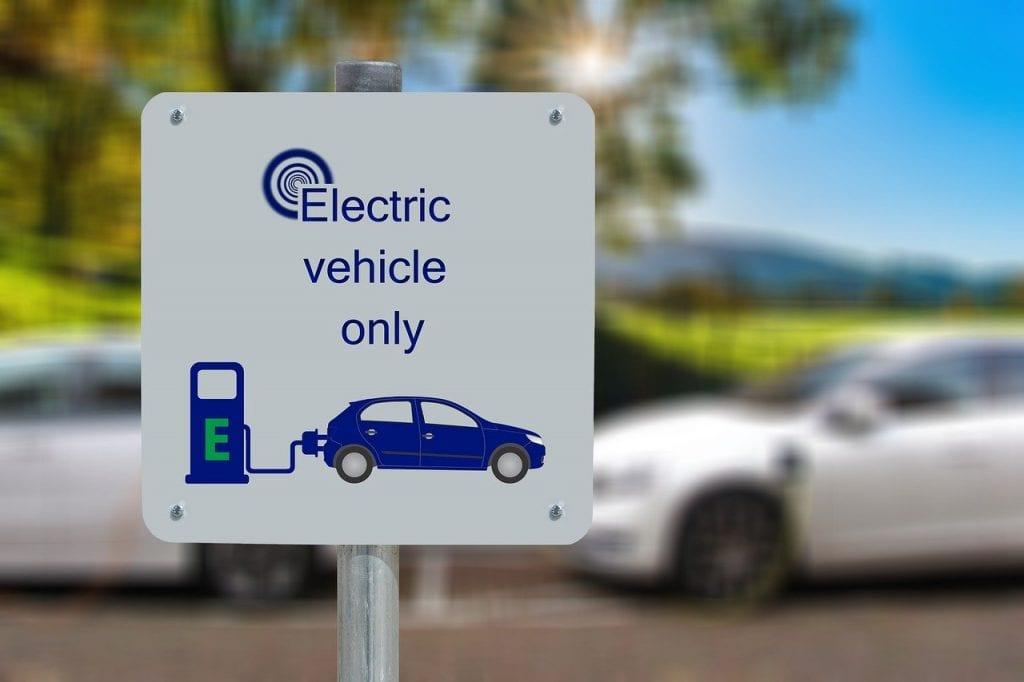
Additional Considerations for Used EVs
When buying any used EV, there are a few key considerations. The first is battery health, as any EV’s battery pack tends to degrade over time and can be costly to replace. A quick check of the vehicle’s current max range against the manufacturer’s original specifications will give you a general idea of its current health. But as with all used vehicles, it’s smart to have any specific example you’re seriously considering inspected by a specialist before committing to the purchase.
Another thing to think about is the availability and cost of charging infrastructure in your area. EVs make the most sense for people who can charge them at home, where charging is not only far more convenient than it is with a commercial charger but also tends to be much less expensive. If you can’t conveniently and affordably charge it, a used EV might not be the right choice for you.
Buying a used EV offers the chance to save money while reducing your environmental footprint. It’s not just about eco-friendliness, though; many EVs provide a driving experience that’s smooth, quiet, and uniquely satisfying. The used EV market offers something for everyone, from daily commuters to long-distance drivers, city dwellers to those requiring more cargo space. Remember, considerations such as battery health and charging infrastructure are vital in making the right used EV choice.
Photos courtesy of BMW, Chevrolet, Kia, Nissan, and Volkswagen